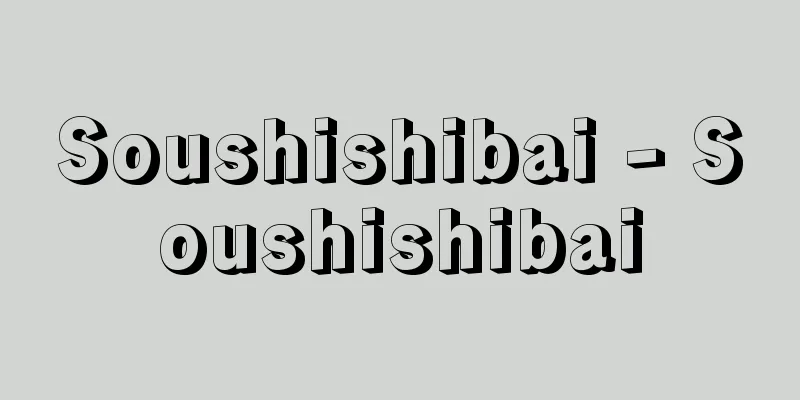Okara

|
Okara is the residue left over after soy milk is squeezed out when making tofu. The "kara" in okara comes from the state of the residue after it has been squeezed out. It is also called unohana or kirazu. Unohana is named after its shape, which resembles unohana, a plant grown as a hedge, and kirazu is named after the fact that it does not need to be cut with a knife, in other words, the word "kirazu" is used to express a snow-like feeling, and both are names used to hide the name "okara," which refers to the residue left over after squeezing. Historically, it can be said to have existed alongside tofu production. Nutritionally, it contains a lot of indigestible dietary fiber, but some of the oil, vitamin B1 , protein, and carbohydrates in soybeans remain. In addition to being eaten directly, it was previously used as livestock feed. It was particularly valuable as feed for dairy cows, as it increased the amount of milk they produced. Okara has almost no flavor on its own and is dry, so vegetable oil is used in cooking to give it a rich flavor. There are many dishes using okara, including stir-fried unohana, tossed unohana, unohana soup, and unohana sushi, and many regional dishes use okara. To make stir-fried unohana, okara is lightly stir-fried in sesame oil and then combined with thinly sliced fried tofu seasoned sweet and spicy with soy sauce, carrots, and green onions. Unohana soup is made by adding white miso and okara to a broth made by boiling salted salmon, salted yellowtail, daikon radish, carrots, konjac, and fried tofu until it thickens. Unohana sushi is made by straining soybean pulp, adding stock, salt, and sugar, frying it, adding vinegar, and cooling it, and then using this as a substitute for sushi rice, topping it with vinegar-marinated fish such as gizzard shad, small horse mackerel, or sardines, and then rolling it into a rice ball. [Tomomi Kono and Yonago Yamaguchi] Also called Unohana or Yukihana ©Shogakukan "> Okara Source: Shogakukan Encyclopedia Nipponica About Encyclopedia Nipponica Information | Legend |
|
豆腐をつくる際、豆乳を絞った残りかすの部分をいう。おからの「から」は、絞りとった残りの状態からついた名である。卯(う)の花あるいは雪花菜(きらず)ともいう。卯の花は、生け垣などに植えられているウノハナに形状が似ているところから、雪花菜は、包丁で切らなくてもよい、つまり「切らず」ということばに雪のような感じを表す字をあてた名で、いずれもおからという絞りかすを表す名称を隠すためである。歴史的には、豆腐製造とともにあったといってよい。栄養的には、不消化性の食物繊維が多いが、大豆中の油、ビタミンB1、タンパク質、糖質なども一部残っている。直接食用にするほか、以前には家畜の飼料にした。とくに乳牛の飼料にすると、搾乳量が増えるので飼料価値が高かった。 おからは、そのままでは味がほとんどなく、かさかさしているので、料理の際は、植物油を使用してこくを出す。料理には、卯の花炒(い)り、卯の花和(あ)え、卯の花汁、卯の花ずしなどがあり、各地の郷土料理のなかに、おからを使ったものが多い。卯の花炒りは、おからをごま油でざっと炒(いた)め、細く切ってしょうゆ味で甘辛く味つけした油揚げ、ニンジン、ネギとあわせる。卯の花汁は、塩ザケ、塩ブリ、ダイコン、ニンジン、こんにゃく、油揚げを煮た汁に、白みそとおからを濃度がつく程度まで加えてつくる。卯の花ずしは、おからを裏漉(うらご)しして、だし汁、塩、砂糖を加えて炒りつけ、酢を加えて冷ましたものをすし飯がわりにして、コハダ、小アジ、イワシなどの酢でしめたものをのせ、握ったものである。 [河野友美・山口米子] 卯の花、雪花菜ともいう©Shogakukan"> おから 出典 小学館 日本大百科全書(ニッポニカ)日本大百科全書(ニッポニカ)について 情報 | 凡例 |
<<: Ocarina (English spelling) ocarina Italian
Recommend
Yallow, R. (English spelling) YallowR
...A well-type scintillation detector is mainly u...
Selection - Senka
[Noun] (suru) The act of selecting fruits accordin...
Odenmacho Group - Otenmacho Group
…At first, the Edo store mainly handled Kyoto-mad...
Arte (trade association) - Arte
…Generally, it refers to trade associations of me...
Dedeagatch
…It has a railway station between Thessaloniki an...
Empty set - kuushūgō (English spelling) empty set, void set
A set that does not contain any elements is called...
right of common
… [History] Because forests and wilderness areas ...
Kaicha - Tea
〘Noun〙 A way to taste tea in the tea ceremony. Dri...
Mediastinal tumors
...This is called pneumomediastinum. [Mediastinal...
Ando clan
A powerful clan in the medieval north of Ou. Durin...
Anan [city] - Anan
A city in the eastern part of Tokushima Prefecture...
trade secret
…Broadly speaking, it refers to undisclosed infor...
Dolly Varden - Oshoro Koma
A fish of the genus Salvelinus, order Salmoniform...
Investment bank
Investment banks are American securities firms who...
Paterno, PA (English spelling)
…Literature written in the Philippines flourished...









